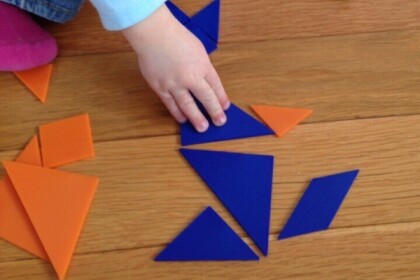
STEM In The Community

Exploring STEM at Home

We’ve been hearing from parents who want to know what they can do to bring STEM into their children’s lives outside of school. That’s why the flowchart posted as a resource here seems worth featuring.
It suggests specific activities that relate to children’s emerging interests—Roominate, say, then Squishy Circuits, for a child who is interested in dollhouses.
Jill Neumayer DePiper, our Network Director, is steeped in math education. She is also the mother of two girls, ages five and two. Which means, she says, that while some ideas for encouraging her daughters to explore STEM have come easily, that is not always the case.
Here she describes her experience and an insight inspired by this chart:
It took me many hours of online shopping to find a shape sorter for my first-born. I wanted one that would show her how squares are a particular type of rectangle, that is, that all squares are rectangles.
Yes, she was only 4 months old, but as a former middle-school math teacher, I couldn’t help myself. And I had worked with many students who were very surprised by this relationship. I wanted to start her young.
I’m certainly less of a purist by now. The title of this article, “Beyond Barbie,” caught my eye not because I have anything against my daughters playing with dolls. What I am interested in, though, is their exploring beyond dolls, too.
For me, choosing math-oriented toys is an enjoyable challenge. After the shape sorter came the magnetic pattern blocks. The girls were into those well before they were a year old. They loved them then and still do. We also regularly haul out the Tangrams—they are aimed at middle-schoolers but they're our go-to entertainment on long airplane flights.
We’re not really all about math in our family. We also love hikes and bird watching, and the North American Field guide is actually a regular bedtime story favorite.
However, when it came to thinking about engineering activities, I found I didn’t know much about what our options were beyond Legos and some wonderful wood blocks.
Lately I’ve been wondering: as they get older, how can we continue to encourage their interest in building as well as in animals and dolls?
This flow chart presents some interesting ideas. And maybe more important is the big point for parents with questions like mine: the key is to notice what your children are already interested in, and go with the flow—exploring engineering, crafting, and the outdoors from each child’s own natural starting point.
